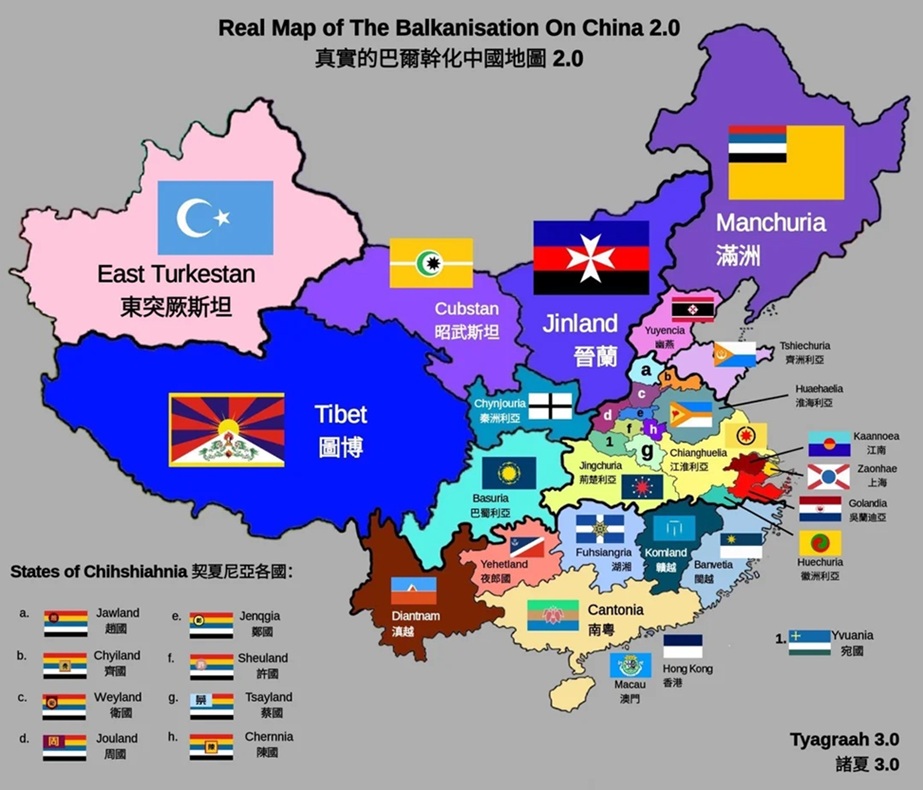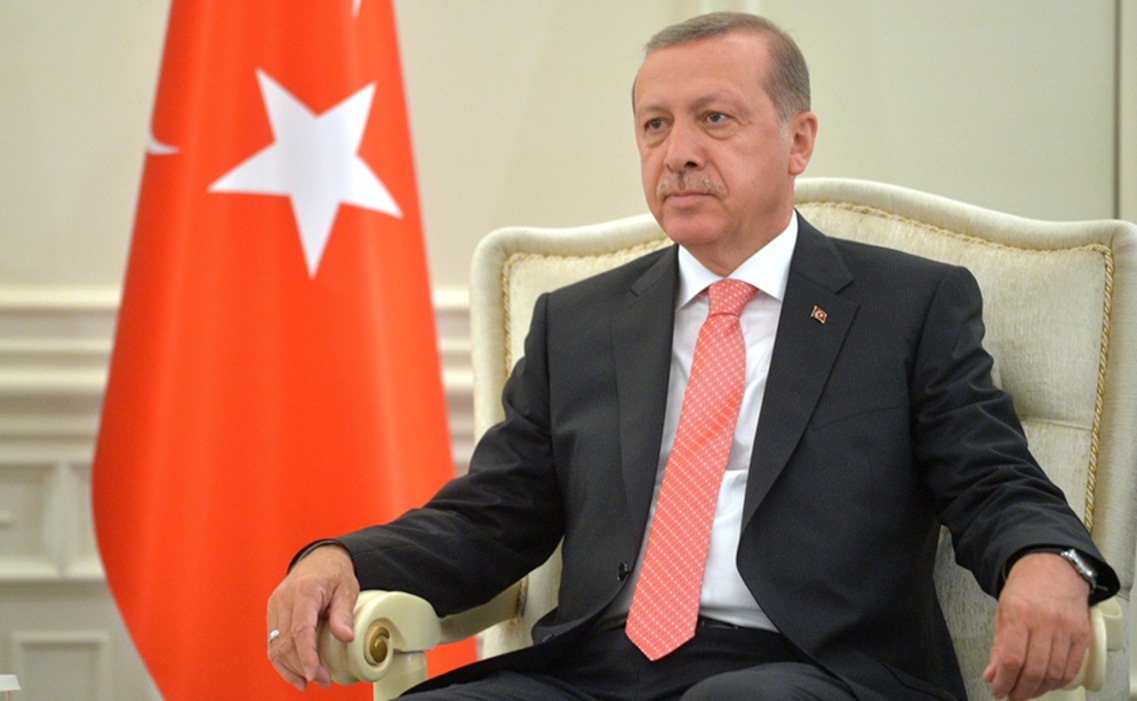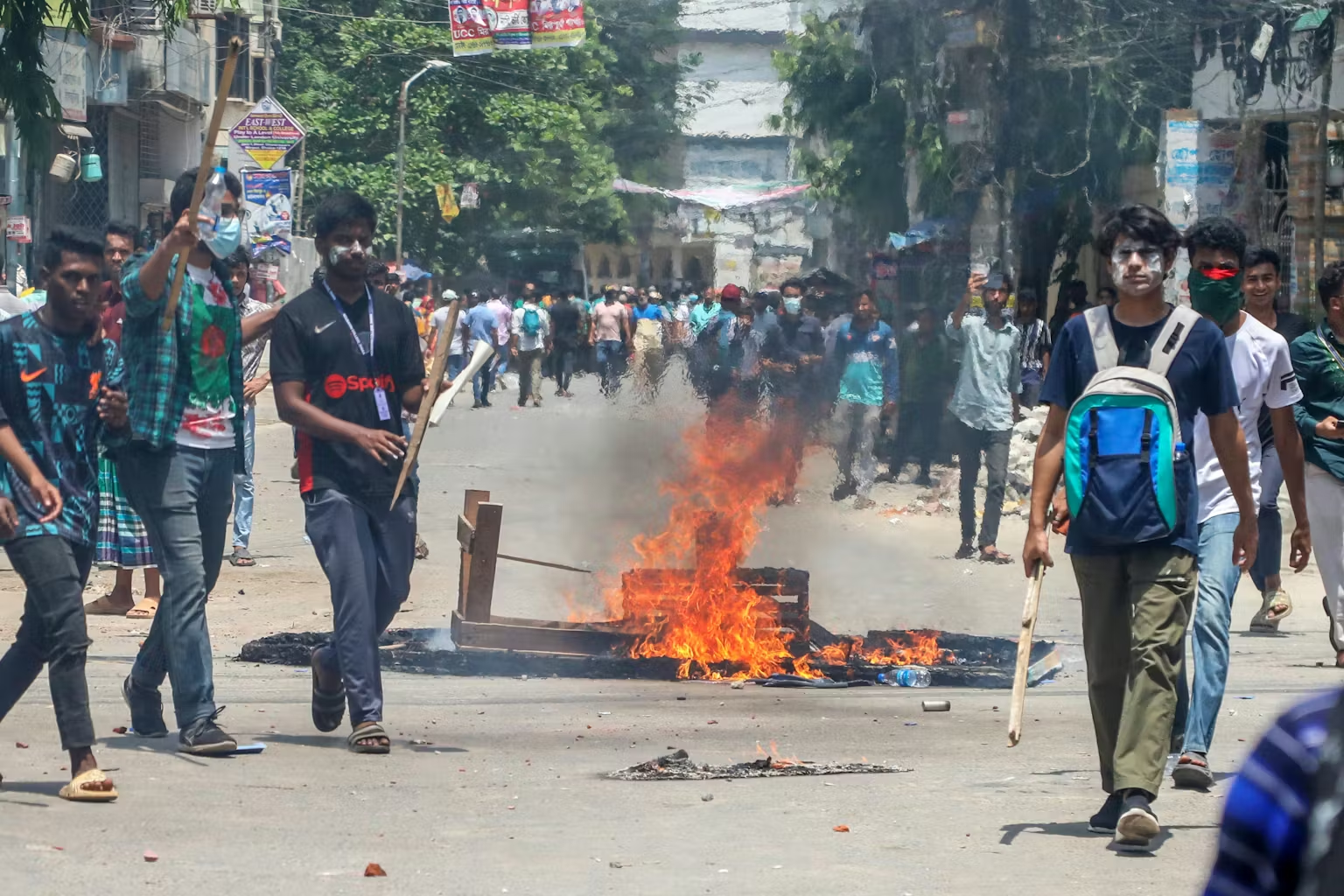Though China has achieved remarkable growth over the past few decades, it faces a constellation of complex challenges, including slowing growth, mounting debt, corruption, demographic shifts, environmental concerns, global trade tensions and technological competition, which could destabilise China in the coming years. Balkanisation is the process of fragmentation of an area, country, or region into multiple smaller and independent states.
India may have survived doomsday predictions, once a favourite pastime of the West, of its balkanisation, but that does not seem to have deterred the Chinese. Today, when Indian goodwill is going vertical, its detractors are not keeping silent – inside or outside. Way back in 2009, New Delhi took exception to an article on a quasi-official Chinese website, which boasted that the great Indian federation was ripe for dismemberment if Beijing tried just a little.
Posted on April 8 on the website iiss.cn (International Institute for Strategic Studies), the article detailed a roadmap for breaking up India. To split India, China can bring into its fold countries like Pakistan, Nepal and Bhutan, support Ulfa in attaining its goal for Assam’s independence, back aspirations of Indian nationalities like Tamils and Nagas, encourage Bangladesh to give a push to the independence of West Bengal and lastly recover the 90,000 sq km territory in southern Tibet.
The article claimed that India as a nation never really existed in history. It was held together by decadent Hinduism, which encouraged caste and exploitation. It surprises the well-connected and keen observers to note what took so long for a political party to echo and support this viewpoint. The political party that had an MOU signed with the Communist Party of China, only a few months back, raised this issue as if on a prompt from someone big enough to influence the already muddled thinking of its leadership. The same political leader went for a briefing at the Chinese embassy at the peak of Galwan, which spurred hostilities.
Apparently, India was not silent or inactive in countering what China thought in 2009 and later. Something must have rattled the stone-faced Chinese primer to issue out a warning. “Anyone attempting to split China in any part of the country will end in crushed bodies and shattered bones,” – Chinese President Xi Jinping said on a state visit to Nepal in October 2019.
The above statement clearly indicates the nervousness of the Chinese government. As Commander Sandeep Dhawan in one of his articles says, “Beneath every story, there is another story, and there is no smoke without fire”.
Is it Possible to Balkanise China?
Yes, it is. It divides based on ethnicity and political reasons. There is a lot of resentment against Xi Jinping and his policies within China. Eventually, those dissenting voices would surface and undo the CCP. It is very correct to highlight here that their one-child policy has affected them psychologically. The generation of single children is very fragile since they were a prized possession for the parents.
Like Taiwan would have Fujian and Hainan, but cannot get more because of their low population to invade (and also Fujian has cultural similarity with Taiwan, so it is easy for them to get).
Manchuria would have independence too. Because they are unique and have a complicated history (with everyone around them). Korea would get some small land from China because of the Korean ethnicity living there (and hope Manchuria don’t attack Korea back for this).
An Alternative view on Chinese Balkanisation exists, and the same is placed below.

PC: Indiacronicle
Manchuria: The traditional three provinces of North-eastern China plus the eastern half of Inner Mongolia, similar to that of Manchukuo.
Inner Mongolia: The autonomous region would likely become independent but is not likely to join Mongolia, as they share different demographics (even the Mongolians living in Inner Mongolia use different writing systems).
Islamic Republic of East Turkestan: The separatism-ridden region is the hot spot of violence and conflicts, and is likely to separate from China once a centralised government breaks down.
North-western Alliance: The part of China with a large Muslim Hui population has been a historically unstable area; thanks to its relative distance from the Central Plains and its geographical isolation from other parts of the country, it is likely to remain independent for a long period of time under warlordism.
Tibet: Even with the Qinghai-Tibet Railway, the plateau is still hardly accessible from outside, making it possible to stay independent.
Zhongyuan: Literally “the Central Plains”, surrounded by mountains to the north and south, has great natural resources and advantageous strategic positions, but is also highly vulnerable to invasions from almost all directions.
Huabei: Literally “Northern China”, the area is similar to that of Zhili and Shandong provinces of the Qing Dynasty combined.
Liangjiang: The wealthiest part of China is likely to form a close alliance, much like what has happened throughout history.
Huguang: The two provinces, Hubei and Hunan, were historically one province and were usually considered a whole. Invasion from the outside is usually hard to conduct (It took the Japanese nearly six years to penetrate Hunan) unless through the Yangtze River.
Sichuan: Known as the “Land of Abundance”, the province has a long history of separatist regimes from Gongsun Shu’s Chengjia to Qiao Zong’s Western Shu to the Sichuan Cliques in the 1920s.
Fujian: The distinct geographical and cultural characteristic of the province makes it likely to stay an independent state.
Liangguang: The two provinces (Hainan became a province only in 1988) are home to the largest Cantonese-speaking population in the world and are historically known as Nanyue.
Yunnan: The most culturally and racially diverse province of China is likely to loosely form a union between all minorities while maintaining its independence.
Guizhou: Similar to Yunnan.
HK & Macau: The two special administrative regions may gain full autonomy.
Taiwan: Unlike its current awkward international status, the island may take advantage of China’s balkanization and seek full independence.
How can China’s Balkanisation Materialise?
One of the most well-known phrases in China is: “the empire, long divided must unite; long united must divide”. Perhaps the CCP and Xi Jinping have forgotten this phrase. At Insightful Geopolitics, it is our assessment that China may take less than five years to reach that stage.
For an outsider, China may look like one compact unit, where all the citizens are similar, who dress in the same fashion, and eat the same kind of food, just like in the book, ’Mao Tse-Tung: Emperor of the Blue Ants’, by George Paloczi-Horvath. However, that is far from the truth. Today’s China comprises of 56 ethnic groups. Han Chinese are the majority group, accounting for 91.59% of the population, and the other 55 make up the remaining 8.41%. China has 22 provinces, five autonomous regions (Guangxi, Inner Mongolia, Ningxia, Tibet, and Xinjiang), four municipalities (Beijing, Shanghai, Tianjin, and Chongqing), and two special administrative regions (Hong Kong and Macao).
Xi Jinping is escalating the non-issues and standoffs to galvanise his dwindling support base. The Communist Party is also facing major confrontations between the party and the people, and the emerging economic meltdown. More and more people are deciding not to believe in Jinping’s propaganda. His open defiance by ex-president Hu Jintao was seen by the entire world.
China is reaching a tipping point, and most of its regions could turn into free nations. The Chinese government is trying hard to keep the focus on Taiwan, the Ladakh standoff and posturing against the US-led ’Quad’ in the South China Sea, to rally support for Xi Jinping.
Can Balkanisation be Facilitated?
Chinese citizens and Asian countries are ready, but the West is still living in euphoria. These Western leaders and strategists repeatedly make the same mistakes when dealing with an adversary like China. The disintegration of China is the need of the hour. With those ethnic groups jammed together, an explosion is inevitable. When China crashes, so will the world economy. Coronavirus is the trigger that has directly affected all nations across the globe and triggered anti-China sentiments. The number of lives lost and economic crises, and unemployment due to the pandemic have brought together all nations on a common anti-China platform like never before. The bloody nose given by India in the Galwan Valley has sent a message across to the world that China is not as big a bully as is being made out. This will embolden some small countries like Taiwan and also Tibet to start working on their anti-China agenda.
- All leading Western experts promote the idea of identifying and exploiting the enemy’s weaknesses. Instead, they should identify and exploit the enemy’s strengths.
- Weaknesses draw heavily from the strengths. When strengths wither away, weaknesses automatically fall apart. Apply the same principle to China.
- China’s weaknesses are mainly in Tibet, Xinjiang, and Hong Kong. The success lies in the majority population – Hans. Create a scenario to bring out young Hans students on the streets of China, demanding justice.
- A major event in the West, hurting Chinese sentiments or Chinese national pride, would do the trick
- Make sure that CPEC (China–Pakistan Economic Corridor) is doomed. Pakistan is a failed nation. China has invested heavily in it and shook Pakistan a little bit, and it is finished. Sympathetic detonation will take place in Beijing.
- Go for ensuring the failure of its OBOR initiative. Through this, China has ensured its energy security, opened new trade routes and attempted regional supremacy. Any damage to OBOR will cause permanent damage to China, which will implode.
- Strengthen the QUAD. The Quadrilateral Security Dialogue (QSD), commonly known as the Quad, is a strategic security dialogue between Australia, India, Japan, and the United States that is maintained by talks between member countries. The diplomatic and military arrangements are widely viewed as a response to increased Chinese economic and military power.
- Introduce carefully planned and designed local issues before the sentiments die down and demonstrators show signs of weariness.
- The mass moments are not allowed in China; however, the CCP loves mass hysteria against Western countries. In fact, they are looking forward to incidents that would divert the attention of Chinese citizens from exploding unemployment and a ruined economy.
Conclusion
The primary aspirations of China’s growing middle class centre on upward mobility for their children, including excellent education and opportunities for personal development and cosmopolitanism. They also strongly desire property and material comforts, such as homes and cars, as symbols of status and success. Beyond consumption, they seek a greater emphasis on procedural justice, such as the rule of law and transparency, and express interest in environmental protection and quality public services. Meeting the aspirations of the new generation would be a big challenge for the Communist Party of China without a democratic framework for governance.
Disclaimer: The views and opinions expressed by the author do not necessarily reflect the views of the Government of India and Defence Research and Studies
Title image courtesy: Reddit







